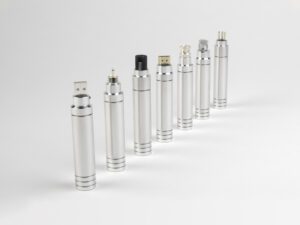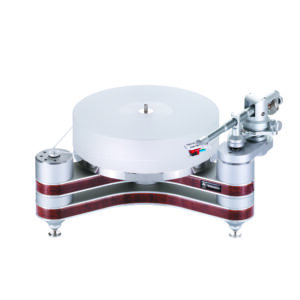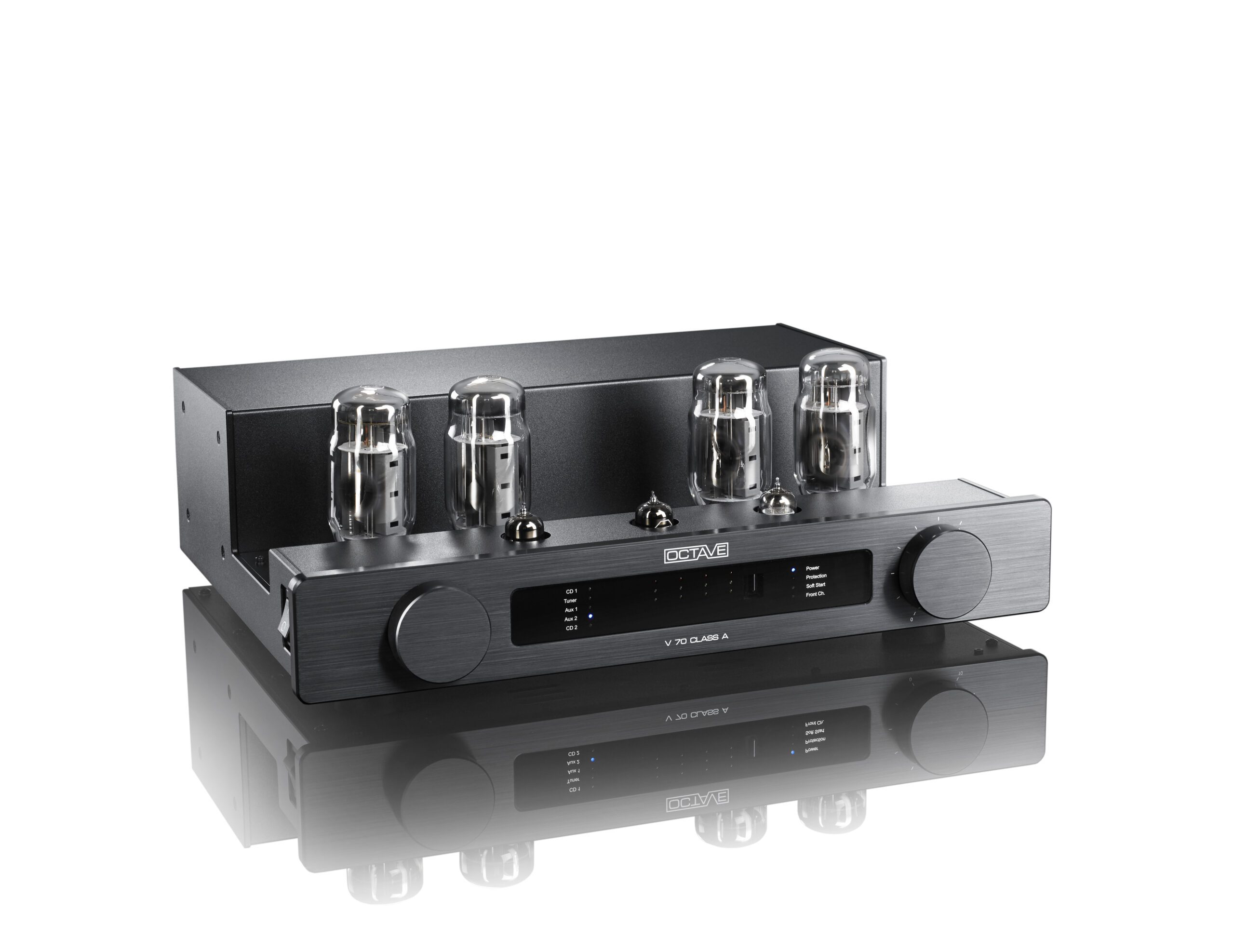
On paper at least, Class A has everything going for it; very low distortion that’s limited to second order harmonics, incredible transparency and fabulous speed. The only drawback is power; as Class A circuits are always on, they use a lot of energy and produce a lot of waste heat… but not a lot of output. It makes one wonder if their warm, natural sound isn’t directly related to the temperature they run at. This is true of solid-state and valve powered examples although the technology was originally developed for thermionic devices in glass tubes and that remains its true home.
Octave is that rare thing; a German company that builds valve amplifiers in Germany. The vast majority of valve amps come from the far east, (often mainland China) and while that doesn’t indicate lower quality per se the ‘Made In Germany’ badge has a lot going for it. In today’s climate it also means that supplies haven’t dried up even if energy supplies themselves aren’t as secure as they used to be.
The V70 Class A is not inexpensive but neither is it Octave’s most ambitious integrated offering; that honour goes to the rather similar looking V80SE with its 150 Watts per channel when using KT150 output valves. The V70 Class A can be used with a few different types of output valve but is supplied with chunky KT120 pentodes in a push-pull arrangement that’s specified to deliver 50 Watts a side with a peak output of 70W (when using the optional external power supply) and importantly as the name suggests these are Class A Watts or so it says. Octave’s Andreas Hoffman developed what he calls Dynamic Bias Control which he describes as a means of providing “Class-A virtues over the entire frequency response up to maximum modulation”. To the non-engineering eye this looks a bit like the way that a vinyl master can be made with a certain dynamic range, but by gain riding you can increase or decrease its sensitivity according to available power. Essentially Octave have found a way of moving the Class A power band to suit the signal: cunning stuff!
On the lowdown
The V70 Class A has a switch on the back that’s marked ‘Low’ and ‘High’; this isn’t to suit your preferred listening level but to accommodate different output valves. ‘Low’ is for 25W output with KT88, 6550, KT90 and KT100 valves while ‘High’ allows up to 50W from KT120 and KT150 valves. Another unusual switch on this amplifier is marked ‘Ecomode’, when switched on this is a signal controlled means of having the amp go into a form of standby if no signal is detected for seven minutes. It’s not a full standby because certain sections of the amp remain powered up. This saves energy and extends valve life and it takes 20 to 30 seconds to power up once a signal is detected, which is also the case at switch on because of the soft-start system that is likewise designed to extend valve life. The third function of this switch is to turn the power amplifier section of the V70 Class A off so that the unit can be used as a preamplifier only.
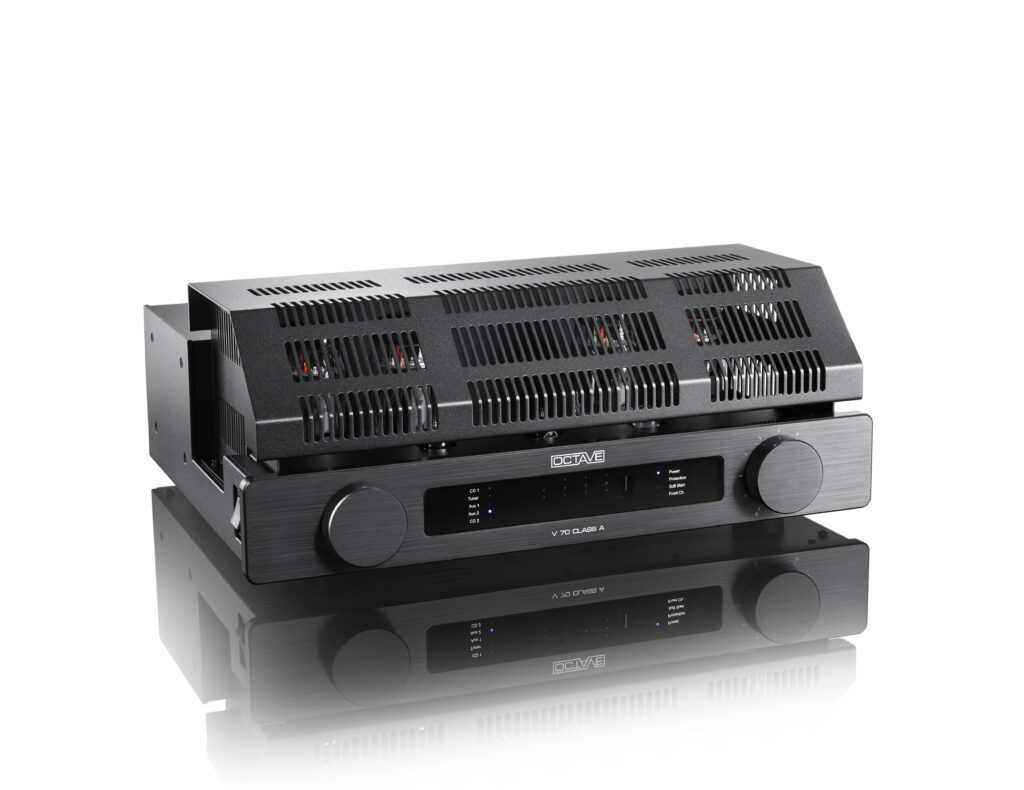
The connection array on this amplifier consists of three RCA line inputs plus a fourth that can be supplied as a phono stage (MM or MC), a tape output and a balanced input. There also an RCA input marked Front Channel which is essentially a bypass for multichannel systems where the processor controls volume and uses the power amp section of the V70 Class A to drive the front channels. Unlike many valve amplifiers there are no alternative transformer tappings to suit four or eight Ohm loudspeakers, just a single hot connector as per transistor designs. Those wishing to upgrade the potential of this amplifier have the option to add one of Octave’s outboard Black Box power supplies using a dedicated multipin socket on the rear.
While this Octave’s display is marked for bias this is a self-biasing amplifier. There is no means to adjust the quiescent current sent to the valves for optimum operation. The display serves as a means to indicate the health of the valves and let the user know when they need replacing. Octave suggests that the output valves on this amplifier should last for three to five years with the driver valves being good for ten years or more.
Possibly the best thing about Octave amplifiers, apart from their sound, is the remote handset. This is a chunky but hand size lump with only two buttons on it and beautifully soft to the touch they are too, requiring the gentlest of squeezes to elicit a change in volume.
Wind it up
Unlike the Melody AN300B Max reviewed last month, which had triodes in a Class B push-pull arrangement the V70 Class A requires the volume to be wound up high in order to deliver the goods through PMC twenty5.26i (86dB sensitivity) loudspeakers. On most material the dial was around the three o’clock position, with quieter recordings I got to five o’clock. It’s safe to say that those after high playback levels will need more sensitive loudspeakers or smallish rooms to get their fix. But at medium to high levels this is a very engaging even addictive amplifier with an ability to get right down to the nitty gritty in everything you play through it.
The balance is more even handed than triode amplifiers, leading-edge definition is a bit stronger and there’s emphasis on detail that when combined with a fast paced delivery really draws you in. It does this regardless of whether you are paying attention or not by virtue of the coherence it brings to the party. Nothing seems to phase this amplifier and as a result it delivers the signal in a precise yet fluent fashion that serves the music extremely well. The bass lacks the grip found with solid state alternatives but makes a good case for its relatively natural presentation, essentially suggesting that if you get a strong sense of control that is a characteristic of the amplifier and not necessarily part of the original signal. The bass is certainly fulsome and powerful but speakers need less boundary reinforcement or, to put it another way, more space behind them.
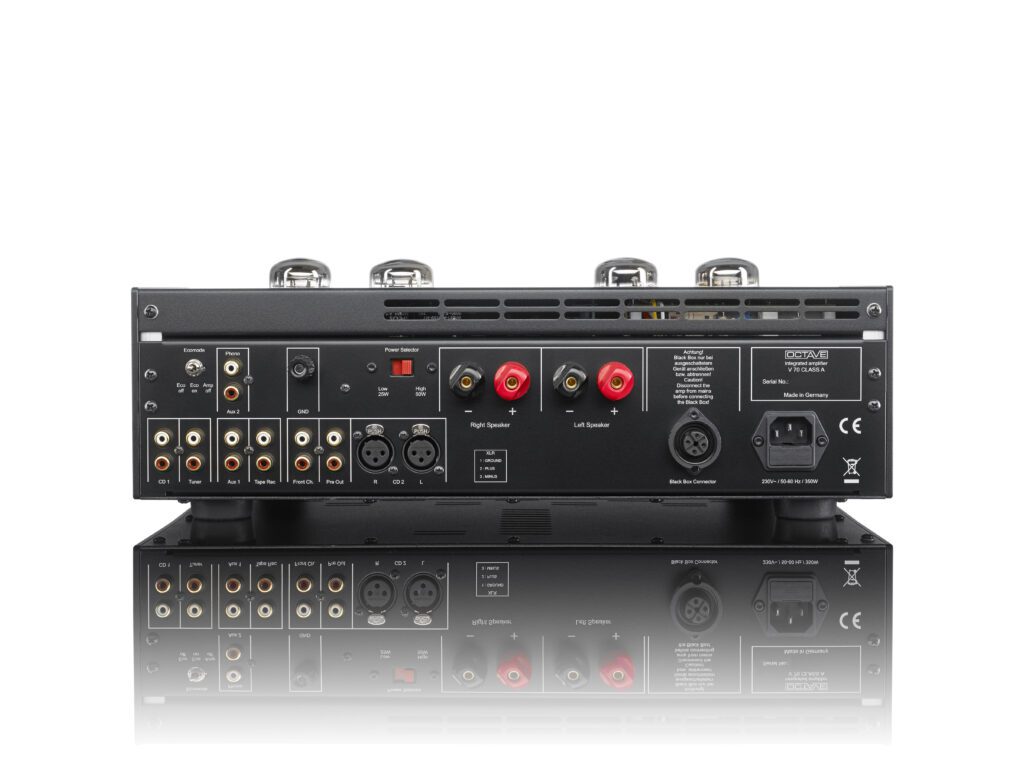
This Octave treads the fine line between control and musicality extremely well. It avoids the bloom of less powerful valve amplifiers and likewise delivers mid and treble without the fine grain found with many transistor designs. Its glasses are not rose tinted but it has an immediacy and insight that is highly gratifying. Image scale is not exaggerated either, everything remains tightly in focus unless sounds are deliberately placed outside the speakers as in Radiohead’s ‘All I Need’ [In Rainbows], which seems a bit small scale until the special effects kick in.
Feel the tone
As is usually the case with valves analogue sources sound particularly appealing, the synth on Phi-Sonics’ The Cradle being a case in point. Up until hearing it on the Octave this had sounded good, but now it was tonally richer and more real. Ditto the sax on the same album which now had a tonetasticness to it that was far more appealing than usual. I mean, I don’t even like sax most of the time, which probably says as much about the way transistor amps handle them as anything. This Octave really likes live recordings too; it pulls out a lot of the quieter details that make it clear you are hearing a real event rather than a studio production. This was apparent with Ryan Adams and the Cardinals’ ‘Magnolia Mountain’ where the balance of power and ease brought the performance into the room. And perhaps more so with Rymden’s live version of ‘Pitter Patter’ which had me almost unconsciously nudging the volume as this trio built up the tension with some crucial double bass from Dan Berglund before Bugge Wesseltoft lets rip on the Rhodes keyboard, taking the intensity up several notches to the next level and beyond.
There are many ways to build a valve amplifier but not many of them result in sufficient power to drive lower sensitivity loudspeakers to full immersion levels, not necessarily high but totally involving in an emotional and rhythmic sense. The styling on the V70 Class A gives little indication of the colour and excitement it can deliver in the music, but the amp’s restrained appearance reflects its character which is very much about getting the music to the speakers as cleanly and coherently as possible.
Technical specifications
- Type 2-channel integrated valve amplifier with optional phono stage
- Analogue inputs Five single-ended line-level inputs (via RCA jacks), one balanced input (via XLR connectors)
- Digital inputs N/A
- Analogue outputs One pre output (via RCA jacks), one tape out (via RCA jacks)
- Input impedance 50kOhm/RCA, 25kOhm/XLR
- Output impedance (preamp) 240 Ohms
- Power Output 50Wpc @ 4 Ohms
- Bandwidth Not specified
- Distortion THD < 0,1% @ 10 W into 4 Ohm
- Signal to Noise Ratio – 100 dB/50 W
- Dimensions (H×W×D) 175 × 451 × 405mm
- Weight 23Kg
- Price £9,350
Manufacturer
Octave Audio
UK Distributor
Elite Audio
+44(0)1334 570 666
By Jason Kennedy
More articles from this authorRead Next From Review
See all
PrimaLuna EVO 100 phono preamplifier
- Apr 22, 2024

Reiki Audio SuperSwitch Master Pro + Servant Pro
- Mar 27, 2024

Melco Audio N1-S38 music server
- Mar 27, 2024








